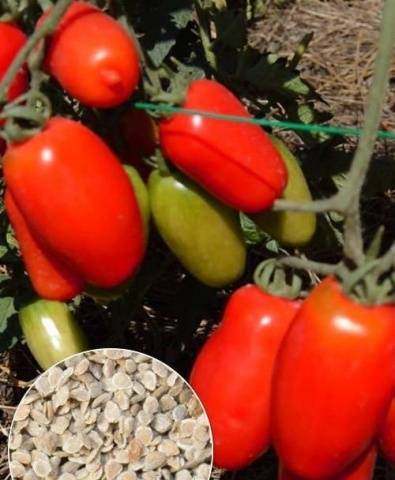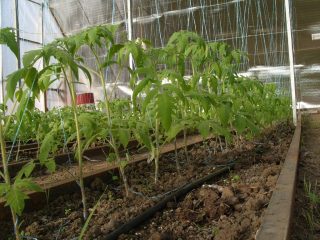Content
Many gardeners have been growing tomatoes for many years and have managed to create their own collection of favorite varieties that will not let them down in any situation. Others are just starting their garden life and are trying, based on other people’s experience, to assess how suitable this or that variety of tomatoes is for them.
The Kibitz tomato can interest both the former and the latter, since it has many attractive properties and characteristics, and beginners in gardening will be especially pleased with its stability and unpretentiousness in cultivation.
Description of the variety
The history of the origin of this tomato variety is not exactly known. Since it is not included in the State Register of Breeding Achievements of Russia and the seeds come to Russia mainly from Ukraine, this suggests that this tomato variety was bred by Ukrainian or European (Polish) breeders. There are also many variations in the name of the variety - it is called Kibits, Kibis, and even Chibis. The fact that all these names refer to the same variety is indirectly confirmed by the fact that translated from German the word Kiebtzer means lapwing or pigtail.
In Russia, tomato seeds of the Kibits variety can be purchased mainly through collectors. This tomato variety is not found among the assortment of seed companies.
The Kibitz tomato belongs to the determinate type; the bushes are quite powerful with thick, strong stems, although they grow no more than 50-60 cm in height. In the middle zone, you can grow it in 3-4 stems. In the south, Kibits tomato bushes do not require pinching, pruning, or shaping. But it is very advisable to tie them to supports, because due to the abundant harvest, the branches with tomatoes will fall apart and, at best, risk ending up on the ground, and at worst, they may even break and you may be left without a harvest at all. Sometimes, however, the entire surface under the bushes is covered with cardboard and straw and the tomatoes are allowed to ripen while lying on the straw.
The Kibitz tomato feels equally good both in open ground beds and under any shelter, and its yield practically does not depend on the place of cultivation.
In terms of ripening time, this variety can be classified as ultra-early, since the first fruits can ripen literally 85-90 days after germination. But usually, its fruiting period is very extended, and tomatoes can continue to ripen for another two months after the appearance of the first fruit at the stage of technical maturity.
Despite the early ripening period, the Kibitz tomato is also distinguished by its high yield. From one bush over the entire season you can harvest from 3 to 5 kg of tomatoes.
Tomatoes tolerate unfavorable weather conditions well, especially rain and coolness, and their resistance to late blight is above average. They also exhibit high resistance to blossom end rot and other diseases. In hot, dry weather, tomatoes can shrink and become less juicy, so regular (preferably drip) watering is vital when growing Kibitz tomatoes in hot, dry areas.
Characteristics of tomatoes
Some people refer to the fruits of this tomato variety as pepper-shaped group, some to cream tomatoes, however, its general characteristics can be described as follows:
- The shape of tomatoes is elongated with a characteristic spout at the tip of the fruit.
- The size of the fruits is average, they reach 10-12 cm in length, the average weight of one fruit is 60-80 grams.
- At the stage of technical maturity, tomatoes are green, then they turn brown and acquire an orange tint, and when fully ripe they are bright red. There is no dark spot near the stalk.
- The fruits have 2-3 seed chambers.
- The pulp of Kibitz tomatoes is dense, fleshy, even sugary at the break. The skin is smooth, quite dense and durable.
- Taste qualities are rated a solid four. Some people think that the taste is very good, especially for early ripening tomatoes. Others use Kibitz tomatoes exclusively for preparations. At least tomatoes cannot be called sour; they contain a sufficient amount of sugar.
- The use of tomatoes is universal. And although most housewives consider this variety ideal for whole-fruit canning, others use Kibitz tomatoes exclusively for drying and drying. Indeed, since fruits have a high content of dry matter, excess moisture evaporates from them very easily.
- Tomatoes of this variety are also distinguished by the possibility of long-term storage. In suitable cool conditions they can be stored without loss of presentation for about a month. Kibitz tomatoes also have no problems with transportation.
Features of cultivation
Tomato seeds of this variety can be sown for seedlings throughout March.The exact timing is determined depending on when you can plant the seedlings in a permanent place. For planting, 60-day-old seedlings are usually used. Based on this and adding about another 5-6 days for seed germination, you will get the approximate time for sowing seeds for seedlings.
For germination, the seeds need a temperature of about +22°C, but after the first shoots appear, it is advisable to move future tomatoes to a cooler, but at the same time well-lit place.
The temperature should not exceed +17°C-+18°C, and at night it can be even lower.
When the first pair of true leaves appears, the Kibitz tomato seedlings are planted in separate containers with a recess down to the first leaves. After a week or two, young tomatoes can be fed with any growth stimulant or complex liquid fertilizer.
When planted in a permanent place, up to five Kibitz tomato bushes can be placed on one square meter. It is advisable to add a mixture of humus and wood ash to the planting holes.
A few days after planting, it is advisable to tie the tomatoes to supports so that the flower clusters, and then the fruits, do not bend under their own weight.
To ensure decent yield, tomatoes definitely need regular fertilizing and watering. It is advisable to use complex fertilizer a week after planting seedlings in a permanent place. In the future, potassium-phosphorus fertilizers with microelements are mainly used - before flowering, after flowering and during fruit filling.
Reviews from gardeners
Gardeners reacted favorably to the Kibitz tomato and, judging by the reviews, many, having tried it once, are in no hurry to part with it.
Inna, 42 years old, Ryazan region
My Kibitz tomato seeds came from two sources, but only one grew with a variety similar in description. I really liked the seedlings, they were so stocky, strong, and did not stretch out. When planting, I tied only the central stem to the posts; everything else grew on its own. I practically didn’t remove any stepsons; I removed only the lowest leaves along with the shoots. As a result, I sowed it on March 7, planted it on April 11, and planted it under arches with covering material in early May. The tomatoes set perfectly, on one bush I counted 35 fruits, on the other - about 42. Among the shortcomings, it can be noted that ripe fruits easily fall off the branches with a slight touch. True, tomatoes are dense, so even falling off is not very scary for them. The taste is nothing special, everything was used for preparation. Late blight was less affected than other varieties, no other diseases were noticed, by the end of summer only the lower leaves turned yellow, but this did not affect the harvest in any way.
Conclusion
If you are new to vegetable growing and are looking for early, productive and unpretentious tomatoes, then you should definitely try Kibitz tomatoes; most likely, they will not disappoint you.















